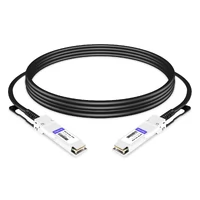NVIDIA’s top-brass products, including the NVIDIA Mellanox options, are necessary for reliable and consistent systems and operations in today’s fast-changing environment of data and networks. The Mellanox QSFP28 DAC Cable is central to this solution as it is interchangeable with 100G Infiniband and Ethernet systems. This article aims to elaborate the key features, advantages, and use cases of the QSFP28 DAC Cable so as to give the reader a complete view of the component that has emerged in networking architectures of the future. We are focusing on its architecture and deployment benefits to demonstrate how this technology helps meet the typical modern requirements for increased speed and bandwidth availability, including for 200G QSFP56 configurations.
Table of Contents
ToggleWhat Are the Components of a Mellanox DAC Cable?
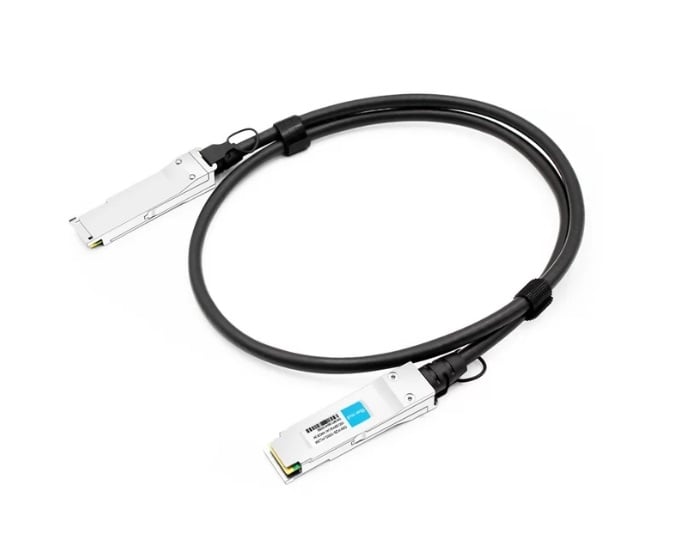
Overview of Direct Attach Cables
DACs or Direct Attach Cables are cost-efficient, high-speed cable assembly solutions that easily facilitate data communication between networking devices within data centers. These are, however, short-distance solutions. A direct attachment cable typically uses a twinax copper cable onto which transceiver modules are permanently affixed on either end of the cable. These cables, however, do not require separate transceiver modules because they significantly reduce the amount of signal degradation experienced. Furthermore, to allow for 100Gbps data rates while using the Mellanox QSFP28 DAC, this particular type of DAC also has low power consumption, which is essential to maintaining the efficiency of the network.
The Importance of Twinax Cables in Data Centers
In this research, especially during my investigation of twinax cables’ significance in data centers, it has been evident that these cables aid in achieving the high speed and lower latency required for modern networking operations. Twinax cables such as the ones used in Mellanox QSFP28 DAC benefit from easy electromagnetic interference due to their coaxial construction, which assists in effective signal transmission over a short reach. Their plug-in capability without needing external transceiver modules eases installation and reduces the delay time. This effectiveness ensures it matches the increasing need for higher bandwidth with low power consumption in the data centers. However, as modern data centers grow with higher throughput expectations, twinax cables remain vital for providing a strong and dependable network infrastructure.
Interactions of the QSFP28 Connector with InfiniBand System
Incorporating the QSFP28 connector within InfiniBand systems expands the ability to transfer data at high speeds, which is crucial for intricate computing systems. The 100G Ethernet and InfiniBand EDR (Enhanced Data Rate) conductor for 100 Gbps transfer speeds is readily available at InfiniBand fixtures, allowing for scalable and efficient interconnect. Also, it is both backward-compatible and forward-scalable, having the capacity to support several lanes, allowing the transport of up to four channels through a single connector, SFP inclusive. This integration supports the achievement of low latency levels while improving response and overall performance across computing high performance operations, thus more application of the QSFP28 in implementation of robust InfiniBand networks is evident.
How does Mellanox achieve Compatibility?
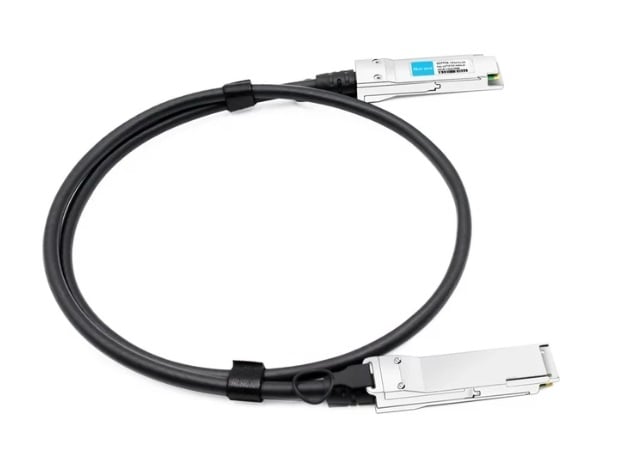
What are the Compatible Devices of Mellanox
Mellanox assures compatibility through conformance and performance testing. The company’s offerings are designed to meet the dominant networking standards such as Ethernet and InfiniBand, thus improving interoperability in multivendor environments and allowing DAC twinax cable connections. Besides, it produces and approves its equipment and software together with the leading IT infrastructure companies to facilitate their use. It also supplies detailed descriptions and instructions that help users implement the Mellanox solutions into different network topologies safely and effectively while enhancing the network’s performance and reliability.
Significance Of Passive Direct Attach Copper Cable In Data Centers
Passive Direct Attach Copper (DAC) cables are key components in data center and enterprise networking applications because they enable high-speed, lower-cost connections/interconnects over short distances. The low power requirements and the low latency of the cables make them even more critical since they outperform active cables or transceivers. Heating elements while enabling the harnessing of high data rates with lesser energy consumption. Copper connections are directly wired into DACs to produce consistent signals ideal for rack-to-rack connections. Additionally, they are self-installing, which reduces the complexity of installations and the overall infrastructure cost, making them ideal for enhancing network performance within specific areas.
Collaborative Efforts between Brands: A Solution to Compatibility Challenges
Brand compatibility represents an enduring challenge that hinders the advancement of interoperable systems. Compatibility challenges can be lessened or even eliminated if organizations collaborate with others to create and test a set of standard protocols and products. Cross-brand compatibility can be supported a lot by following internationally recognized industry standards and protocols like IEEE or ISO. This would allow the smooth integration of products from different brand manufacturers. Establishing partnerships with other companies and cooperating in joint certification and interoperability tests allows us to avoid potential compatibility problems beforehand. Keeping proper documentation up to date and maintaining firmware and software versions are important actions that help facilitate compatibility within networks of various equity positions, particularly with adopting new DAC twin-ax cable technology. If these strategies are followed, corporate strategies for multivendor integration will be less intimidating, and the corporate network stability will be more effective.
Comparison of Passive DAC Cables and Active Optical Cables
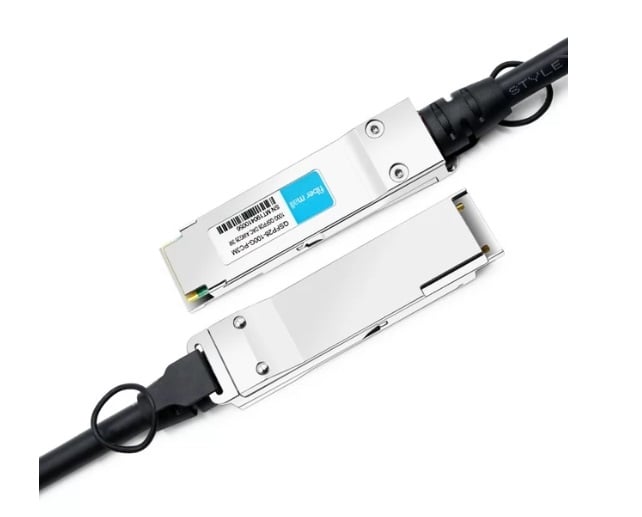
Disadvantages of Active Optical Cables in High-Speed Data Transfers
Passive Direct Attach Copper (DAC) cables are dominant in high-speed networks due to their simplicity and low cost. They use a lot less power than active optical cables and do not need additional functioning electronics. This feature reduces energy costs and heat, which is detrimental in data centers. Passive DAC cables also offer exceptional signal quality and low latency, crucial for high-speed data transfer and performance. In addition, their strength and durability make them reliable for short-range and high-speed interconnections. The economic advantage of passive DAC connectors is that they can be plugged into a device and operate effectively, which reduces the time and expenses needed to set up a network.
When Active Optical Solutions can be employed
In cases of long interconnections that cannot be effectively sustained by passive DAC cables, active optical cables (AOC) come in very handy. Such cases should be avoided where signal clarity is definitive over long distances, for instance, in a large-scale data center connectivity environment or possibly even campus connectivity applications. AOCs have more transmission distance, availability and signal quality with a smaller signal absorption loss across the distance. So, whenever data must be transmitted effectively and efficiently across large geographical areas, AOCs provide unique and dependable solutions that address any latency concerns within the network infrastructure.
Cost and Performance Considerations
Cost and performance issues must be considered when comparing Passive Direct Attach Copper (DAC) cables and Active Optical Cables (AOC) Systems. In this case passive DAC cables are more cost effective as they require lower initial investment and consume less power in short distances. This technology, therefore, works in settings where low-budget considerations are key, but there are limitations on the integrity of the signal and the speed of data transmission. However, AOCs are viable for long-distance applications even though they are more expensive since their ability to transmit data over long distances is commendable with minimal signal degradation. Therefore a decision on either of these solutions should always fit in the expectations and cost of the network and ensure immediate and long term operational requirements are met in the best possible way.
Different Types of Breakout Cables for Infiniband
What Is A Breakout DAC?
A Breakout Direct Attach Copper (DAC) Cable is a type of network cabling that breaks a high-bandwidth single link into multiple lower-bandwidth links. This cabling efficiently disperses a wide link between different ports or devices. Breakout DAC cables are most often encountered in high-performance computing architectures. On one end, there is a single connector, typically of high-density form (QSFP), while on the other end, there are multiple connectors (SFP+) so that data from different points can be merged into one stream or the reverse of it. This design allows for high-volume engagements while allowing for short distances even between the data points and the devices. Such a fitting design is ideal for numerous networking topologies since the data has to be distributed effectively.
Considering Breakout Configurations for 400G and 100G interconnects.
In creating breakout configurations for 400G and 100G interconnects, the network topology and the guaranteed traffic bandwidth requirements should be considered. For 400G interconnections, such breakup topology places a relationship between the ports of a fully interconnected switch such that one 400G QSFP-DD port is broken out to four 100G ports where QSFP28 modules are used. This enables effective bandwidth deployment while ensuring the connection to several devices is at high speed. Similarly, for 100G application, a single QSFP28 can be broken into four pieces, SFP28, each rated 25G. The configuration is optimal in resource-constrained circumstances as it allows precision in traffic deployment to varied network equipment in high-concentration environments. The selected configuration must also take into account the network size, target bitrate, and current facilities to avoid future performance deterioration.
Breakout Cable Installation Guidelines
Some rules must be followed during the installation of breakout cables in order to guarantee proper functionality. To begin with, in particular, make sure to check the connectivity of the breakout cable to the current network devices and the requirements of each of the two connectors to ensure they fit properly. While carrying out the installation process, do not place excessive tensile or excessive kinks in the cable since this will result in degrading the signal quality. The cables must be properly labeled so that identification and subsequent fault finding do not turn out to be a hassle. One cable end with a single connector must be plugged in securely into the high-density port, after which the other end must be connected to respective tools, keeping the arrangement orderly. Watch and change the cable often, and do not allow the cable to be damaged, especially when dealing with the 10G counterparts. If these recommendations are followed, they will improve the operations of the networks about minimizing any possible connection problems that may arise.
The Impact of Mellanox DAC Cables within Modern Data Centers
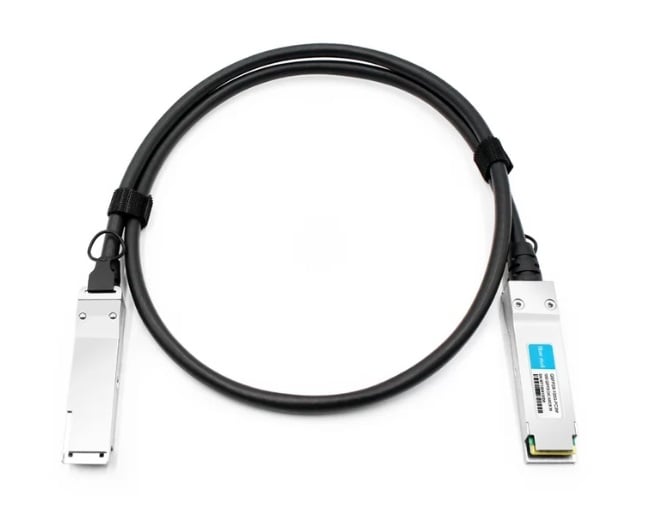
The Changes that Infiniband Technology is Bringing to Data Centers
Thanks to Infiniband technology, data centers can leverage better bandwidth, lower latency, and better scalability than conventional Ethernet networks. This high-performance interconnect technology enables data transfer rates of up to 200Gb/s, making it suitable for demanding use cases such as high-performance computing (HPC) and real-time data analytics. The architecture of Infinband supports scalability, enabling data centers to enhance their networks without degradation of performance. And efficient data management helps to reduce the amount of cables required so cutting down on infrastructure and operational costs. With Infinband, the data centers will be able to enhance efficiency and better manage resources while meeting increasing data requirements through LinkX positions.
Connecting QSFP28 Connectors to QSFP28 FC Connectors
This integration is known as QSFP, easily connects for the same type of transceivers, such as the Quad Small Form-factor Pluggable (QSFP) transceivers in which one to four data channels in the data line will support cutting edge speed. However, this sort of integration has to begin with the determination of the suitability of the QSFP28 modules to the selected equipment. In the first instance, both the sending and the receiving end will require ports that are suitable to the transceiver’s specifications in a network system with a high-density port. Following that, the right procedures regarding the direct connection through a DAC or AOC cable that supports QSFP28 Infiniband EDR passive interfaces are done. In design, correct dressing and strain relief measurements are to be included to restrict mechanical injury to the adverse environment. Finally, any impairments on the system performance requirements should not be above the specified levels while ensuring regular updates are done accordingly. Such assemblies are very important in helping companies as they migrate toward their next-generation target audiences, which demand high bandwidth with low feedback latency.
Improving Network Performance Antecedently Using The Connectors By Mellanox Networks
In this case, the possibility of improving network efficiency, offered by the use of cables produced by Mellanox, is being regarded. Data transmission that requires a lot of bandwidth is made possible through the use of InfiniBand and Ethernet technologies. In addition, the Direct Attach Copper (DAC) cables and the Active Optical Cables (AOC) provide the best possible signal integrity in the market and minimum EMI. Last, using Mellanox cables improves overall performance in a networking environment with seamless data transmission.
Reference Sources
Frequently Asked Questions (FAQs)
Q: What can you say about the Mellanox QSFP28 DAC Cable?
A: A Mellanox QSFP28 DAC (Direct Attach Copper) Cable is a passive twinax cable used for high-speed transmissions in 100G Infiniband and Ethernet connections. It is convenient for short-length connections within data center environments since it can be used with Nvidia Mellanox Network Interface Cards (NICs) and switches at an economical rate.
Q: How does the performance of the QSFP28 DAC Cable stand out in comparison to optical transceivers?
A: QSFP28 DAC cables are less costly to implement in shorter connections (up to 5 meters) than optical transceivers. They also use lower power and latency and are ideal for intra-rack connections using 200G QSFP56 cables. AOC/AOCs are preferred for longer-range applications, cables, or transceivers with fiber optic cables.
Q: Are Mellanox QSFP28 DAC Cables interchangeable with other brands?
A: Yes, Mellanox QSFP28 DAC Cables do work with other brands. Many third parties have compatible 100G QSFP28 DAC Cables that work with Mellanox/Nvidia hardware. It is imperative to ascertain the cable’s specific part number and compatibility list before buying.
Q: What different lengths are offered for the Mellanox QSFP28 DAC Cables?
A: According to the manufacturer specifications, Mellanox QSFP28 DAC Cables are available in lengths of 0.5m, 1m, 1.5m, 2m, 3m, and 5m. Customers can use cable lengths of 1m, 1.5m, 2m, and 3m. Most users prefer the 1.5m compatible cable due to its popularity among data center configurations that use directly attached copper twinax cables.
Q: Is a QSFP28 DAC Cable suitable for a 10G connection?
A: QSPF28 DAC Cables are intended for plugging into cables for 100G connections. Typically, SFP+ DAC cables are used for connecting links with 10 G connections. Yet, some switches and NICs are designed with breakout cables, in which one confines a 100G port into several 10G ports. These also allow you to have an option of using 4x SFP+ breakout to 10G connectivity.
Q: How are passive DAC cables different from Active ones?
A: Passive DAC cables, like most cables of this type, QSFP28 DAC, do not have any electronics and, therefore, should be used for short distances, not over 5m. Active DAC cables employ signal correction circuits that enable longer runs of cable. However, while being a more versatile option, they will consume more energy than passive direct-attach copper twinax cable. Mellanox passive copper cables are classified under QSPF28 DAC.
Q: Will using Mellanox QSFP28 DAC Cables prevent compatibility with Infiniband EDR and HDR?
A: Infiniband EDR (100Gbps) supports Mellanox QSFP28 DAC Cables. You would need to use QSFP56 cables for Infiniband HDR (200Gbps). Mellanox offers a variety of Infiniband DAC cables for different speeds, FDR, EDR, and HDR.
Q: How would you classify QSFP28 DAC Cables relative to fiber patch cords?
A: For short distances, QSFP28 DAC Cables are reasonably priced and easier to install than fiber patch cords. There is no need for additional transceivers, which lowers the cost of the whole system. Fiber patch cords, in conjunction with the appropriate transceivers, can extend up to much longer distances and are essential to connect different rooms or buildings.

